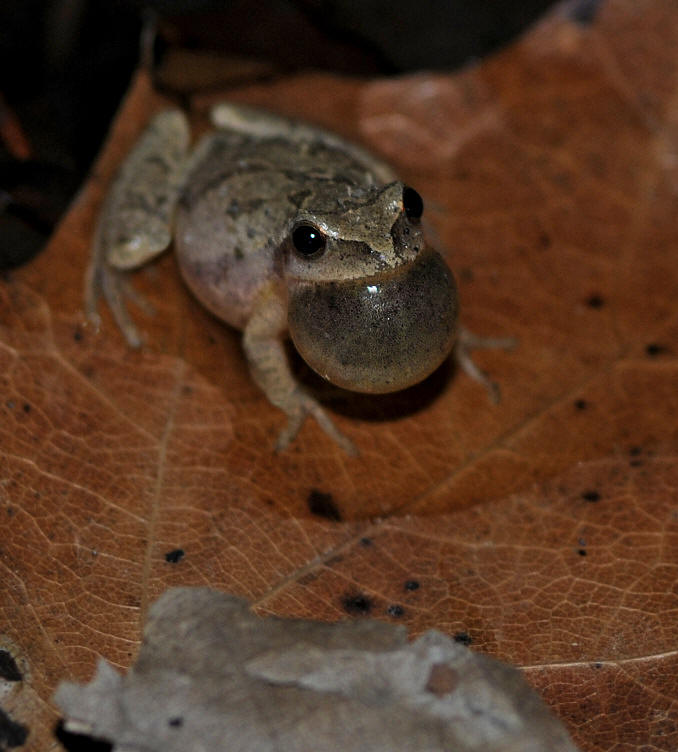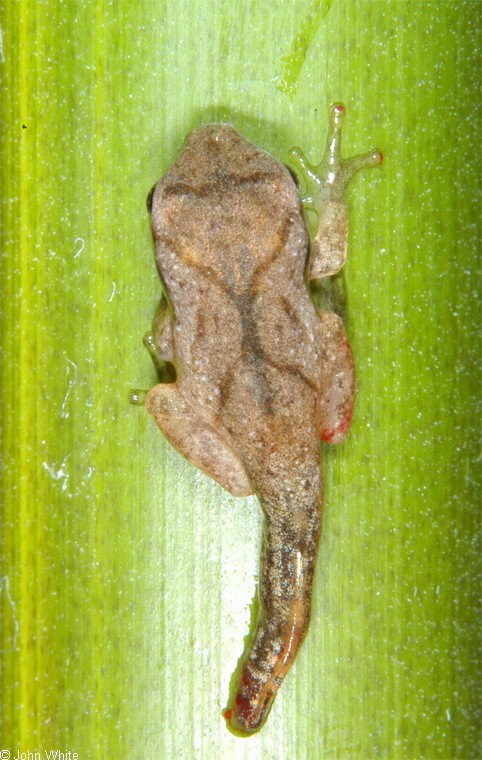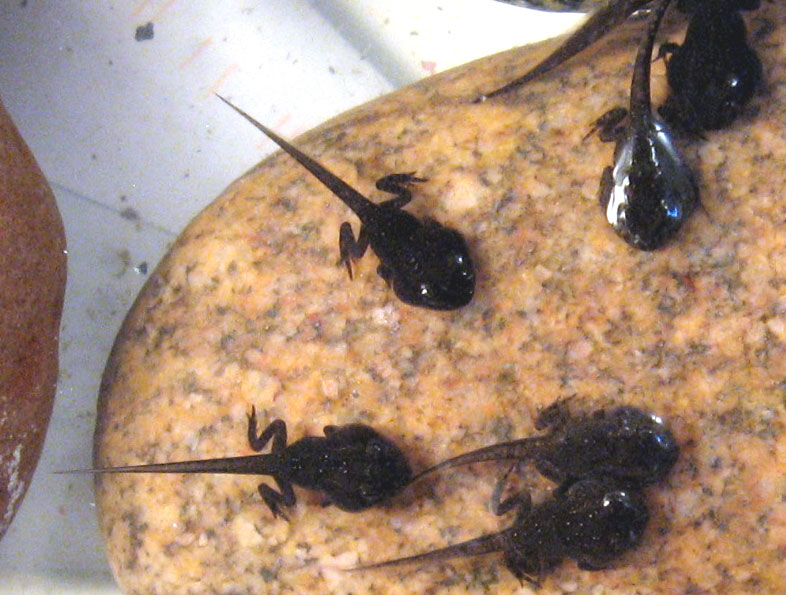Reproduction
Once the spring peeper is about three years old it is ready to take part in the spring peeper mating rituals.
To begin the mating season the spring peepers come out from their hibernation spots such as under the dirt, logs, or in leave piles. They are one of the first anuran frogs to start breeding right after hibernation is over. They then all migrate toward the ponds to begin singing to impress the lady peepers. Each male peeper claims a small area and starts calling until they impress one of the ladies. The amount of males at the pond is far more than the amount of ladies there so the male peepers really have to step their game up if they want to get a lady.
Mating Calls
 They usually begin the chorus fifteen minutes
after the sun goes down. Their calls require a large
amount of energy, so the male frogs usually join in together to
from a much louder chorus. By all joining together it creates a
competition amongst themselves. The peeper with the lowest pitch
will start the competition off. They are able to inflate
their vocal sacs to look like a gigantic balloon sticking out
from under their mouths. The temperature also effects frogs
ability to call. Each frog can make about 90 calls in a four
hour period. On warmer evenings peepers can make the most amount
of calls. The mating season lasts about four to eight weeks.
They usually begin the chorus fifteen minutes
after the sun goes down. Their calls require a large
amount of energy, so the male frogs usually join in together to
from a much louder chorus. By all joining together it creates a
competition amongst themselves. The peeper with the lowest pitch
will start the competition off. They are able to inflate
their vocal sacs to look like a gigantic balloon sticking out
from under their mouths. The temperature also effects frogs
ability to call. Each frog can make about 90 calls in a four
hour period. On warmer evenings peepers can make the most amount
of calls. The mating season lasts about four to eight weeks.
Watch a male spring peeper call his lady in! CLICK HERE!!
So the question is, how do these female peepers decide who is most suitable?
In order to find the most fit male the females listen to the speed of their calls. If their calls are fast that means they are older and larger. If their calls are slow they are probably younger and not up to standards yet.
Once the female finds the male they are most attracted to they let the male know by nudging him. The male then hops onto her back, and the mating begins! The male stays on the female's back while she hops over to the pond and releases her eggs. The reason why the male stays on her back all the way to the pond is so no other male will try to mate with her, and then he can ensure that all the eggs are his. Females lay between 800-1000 eggs. She deposits them under the water attached to vegetation, mud, or hollow trees. She can either release each egg separately or in groups.
Eggs take anywhere from 6-12 days to hatch and come out as tadpoles. The tadpoles stay in the water for about 90-100 days. They eat many different things such as: algae, dead plants, bacteria, fungi, zooplankton, flesh from dead organisms, and even sand. Tadpoles are also a food source for many other organisms.
Metamorphosis
Transformation steps from tadpole to frog:
1. Hindlimbs start to appear, forlimbs start to emerge and tail
starts to shrink
2. Jaws with teeth, eyelids, mucous glands in the skin
3. Cartilaginous skeleton turns into a hard bony skeleton
4. An adult frog!
Back to Nutrition - Home - To Interactions


